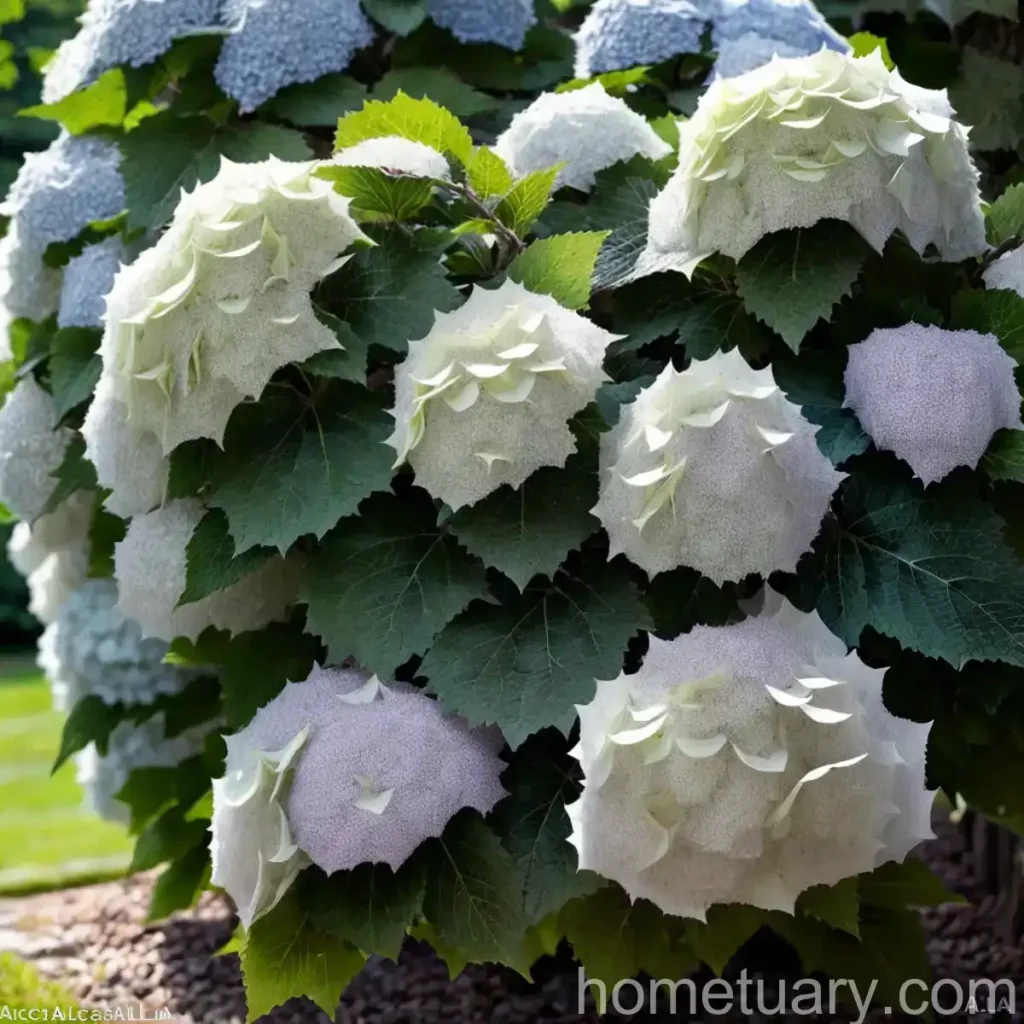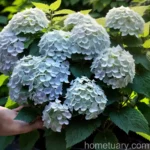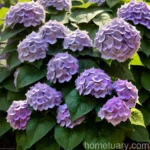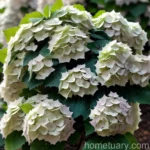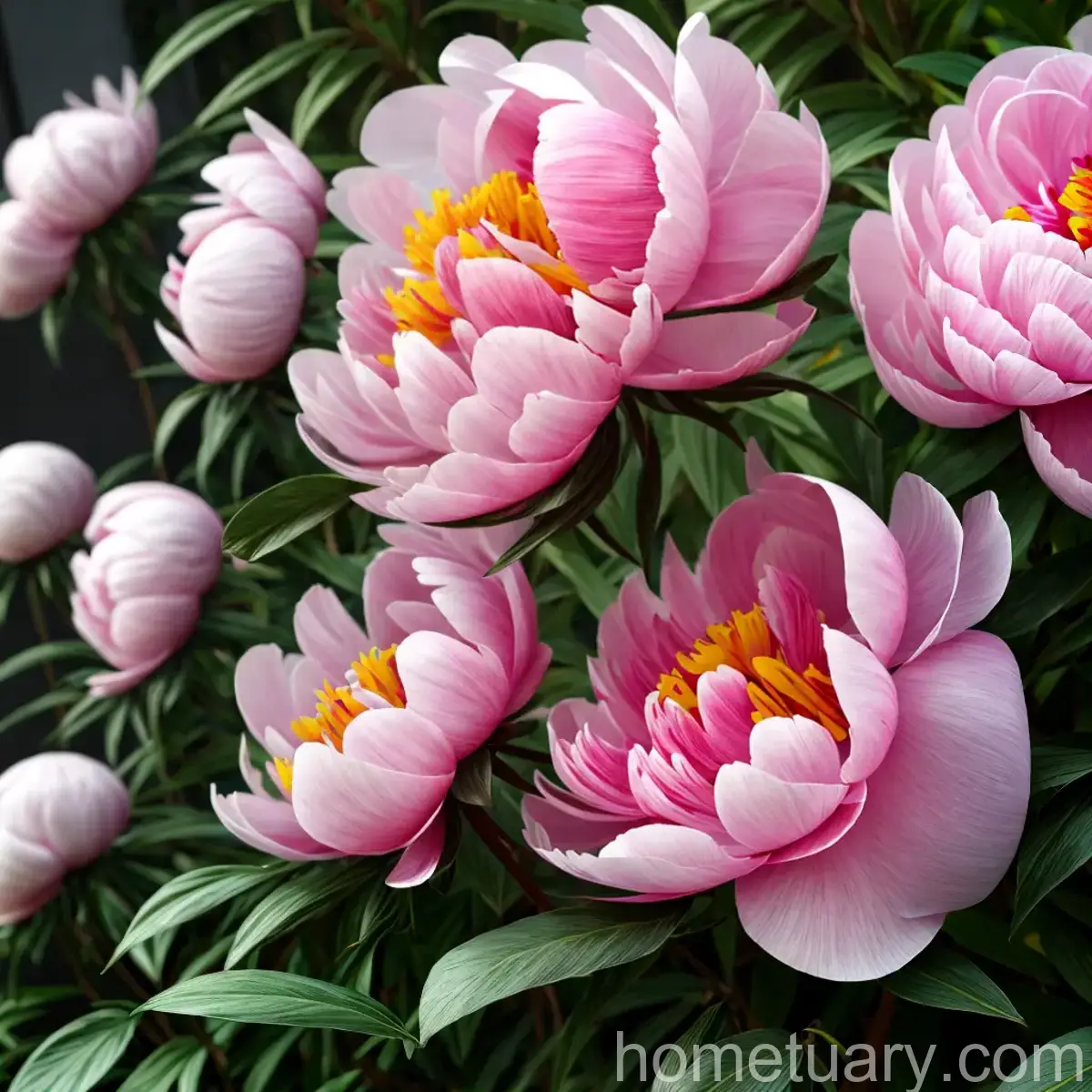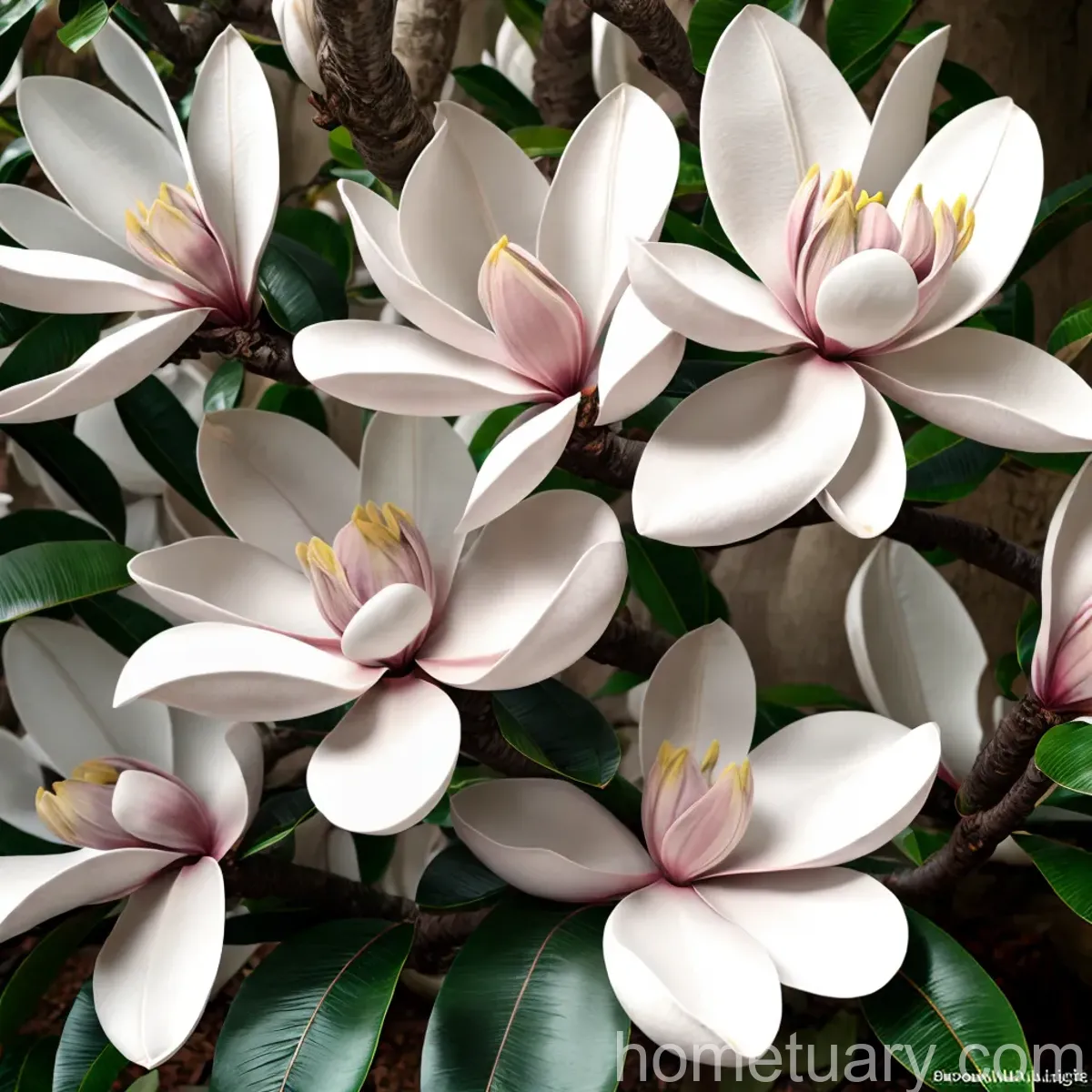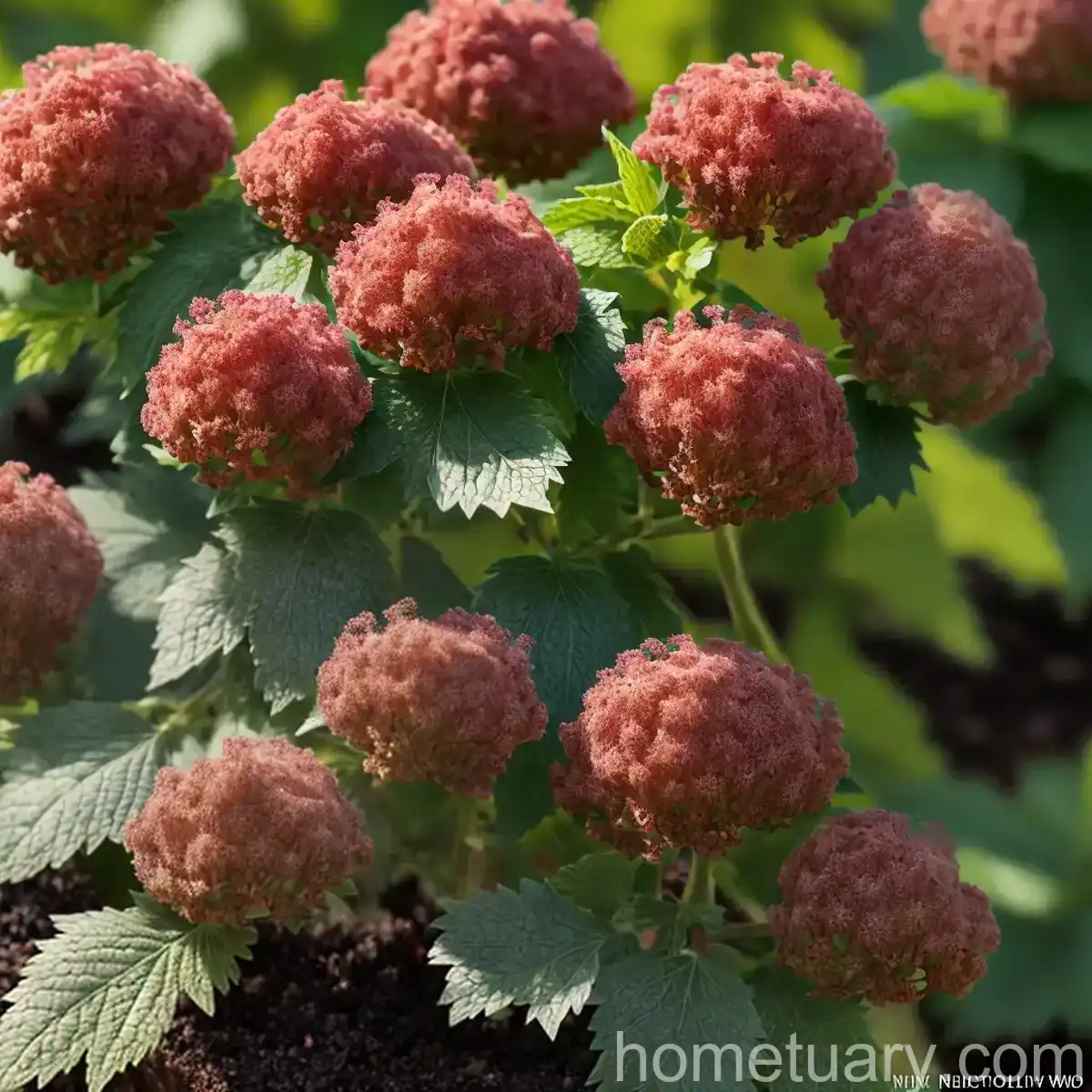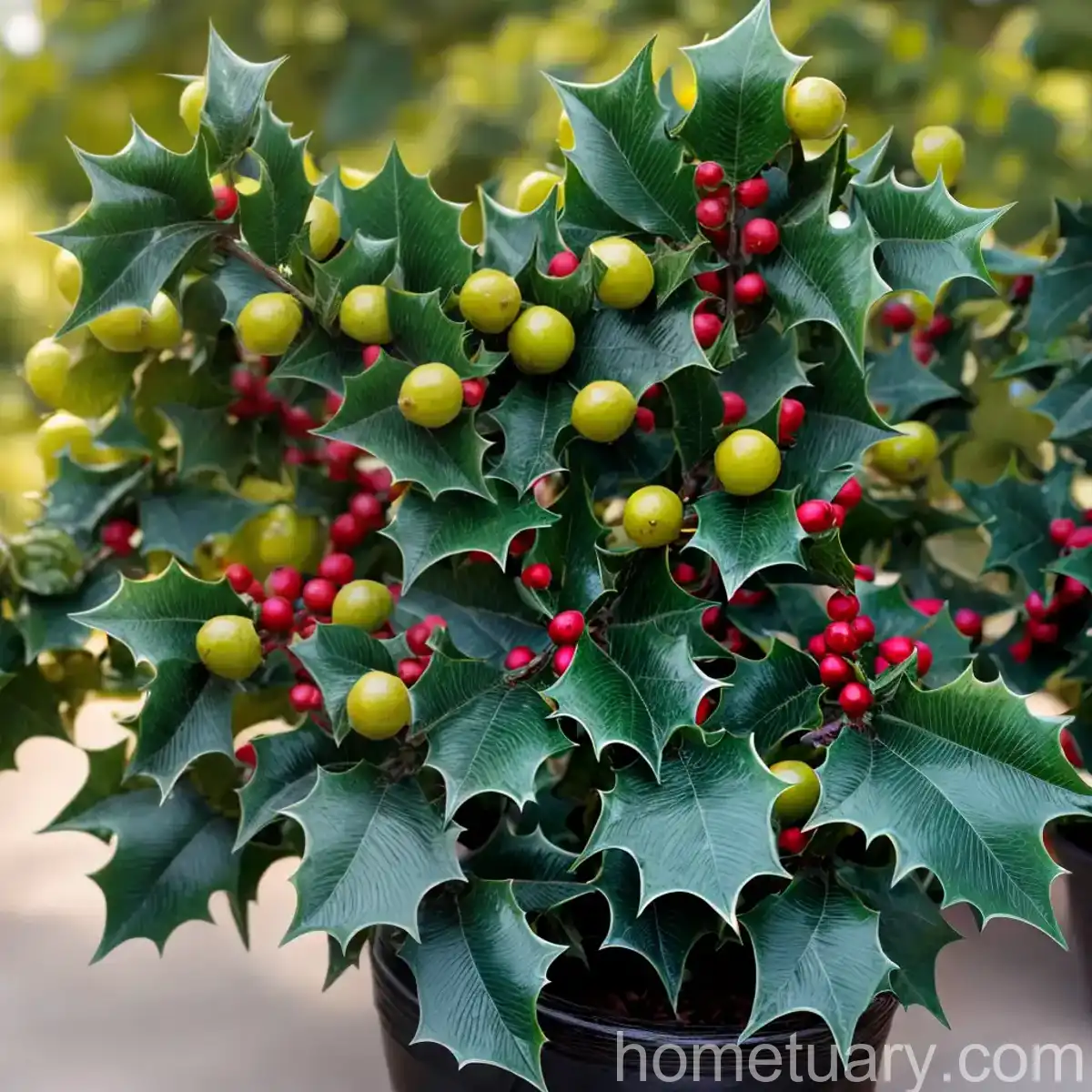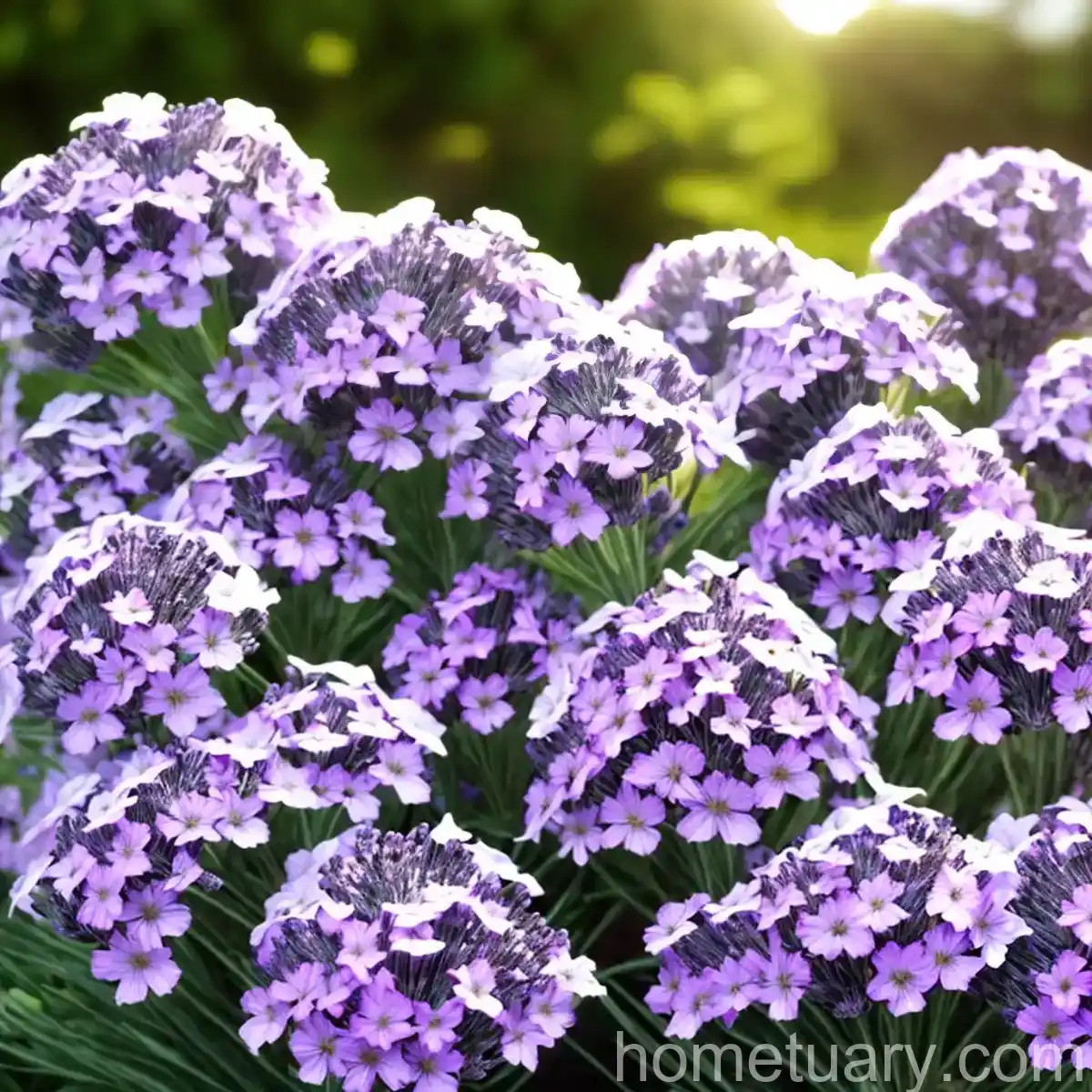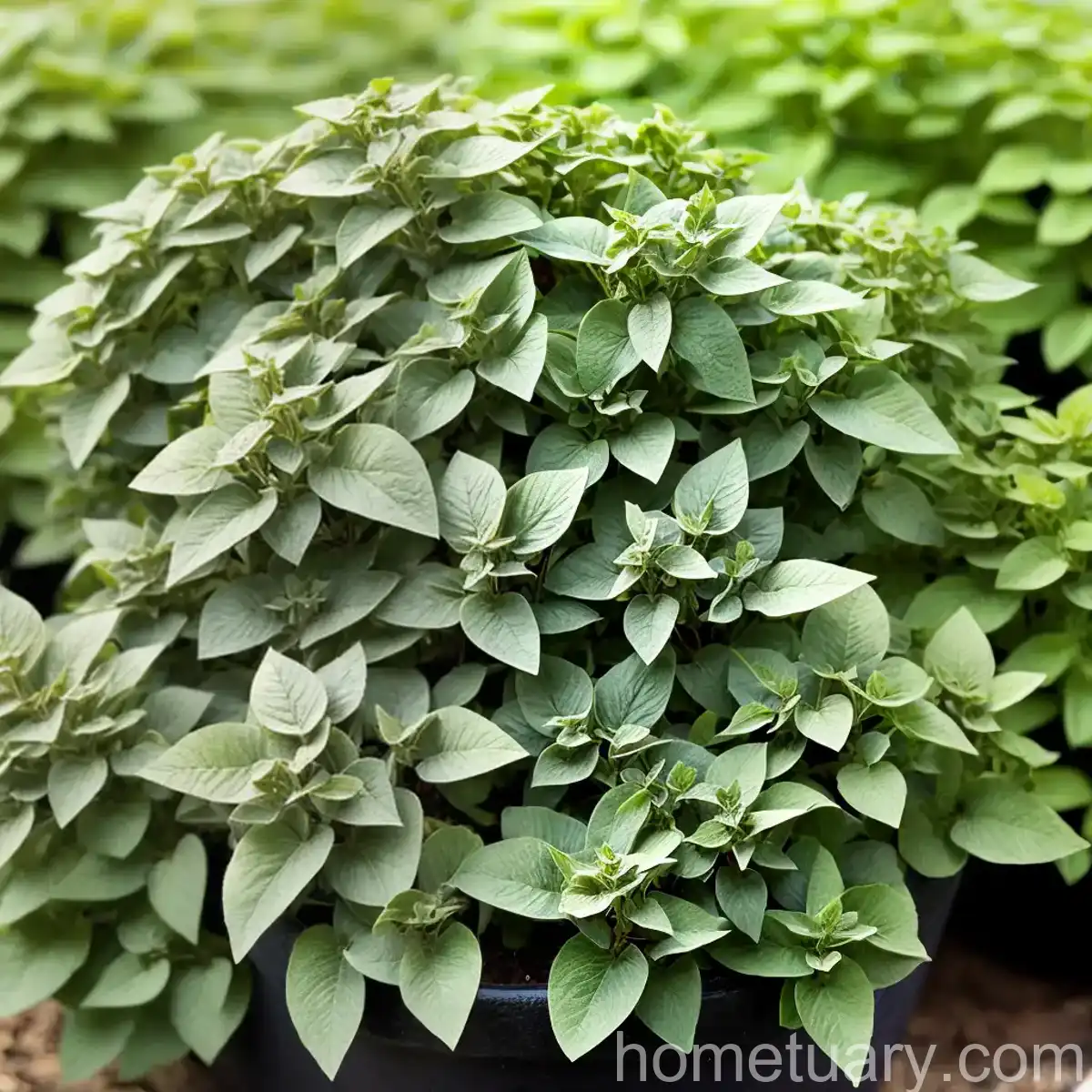Oakleaf Hydrangea (Hydrangea quercifolia ‘Alice’) Care Guide
Hydrangeas are versatile, beautiful, and fascinating plants that are favored by gardeners and landscapers alike. As a plant scientist with expertise in horticulture, I’m often asked about various hydrangea species and their care requirements. In this comprehensive guide, we will delve into the specifics of oakleaf hydrangeas, specifically focusing on the ‘Alice’ variety of Hydrangea quercifolia. From the best growing conditions to propagation and common pests, this article will serve as your go-to resource for cultivating and maintaining the splendid oakleaf hydrangea.
What is the Oakleaf Hydrangea (Hydrangea quercifolia ‘Alice’)?
The oakleaf hydrangea, scientifically known as Hydrangea quercifolia ‘Alice,’ is a deciduous shrub native to the southeastern United States. This charming species is characterized by its large, oak-like leaves, cone-shaped flower clusters, and striking fall foliage. It belongs to the Hydrangeaceae family, and the ‘Alice’ cultivar is celebrated for its robust growth and magnificent blooms.
Oakleaf hydrangeas are cherished for their versatile nature, as they can thrive in various settings, including woodland gardens, borders, and naturalized landscapes. The ‘Alice’ variety, in particular, is renowned for its spectacular, showy blooms and handsome foliage, making it a popular choice for garden enthusiasts seeking a distinct and captivating addition to their outdoor spaces.
Key Takeaways – Oakleaf Hydrangea (Hydrangea quercifolia ‘Alice’)
Before we explore the specific care guidelines for the oakleaf hydrangea, let’s highlight the key takeaways that will be covered in detail throughout this comprehensive guide:
- Culture: Understanding the ideal cultural requirements for nurturing healthy oakleaf hydrangeas.
- Uses: Exploring the diverse uses of oakleaf hydrangeas in landscaping and horticulture.
- Water: Determining the optimal watering practices to maintain proper moisture levels for the plant.
- Sunlight: Recognizing the sun requirements for successful growth and blooming.
- Fertilizer: Identifying the appropriate fertilization regimen to promote vigorous growth and abundant blooms.
- Soil: Evaluating the soil preferences and amendments essential for thriving oakleaf hydrangeas.
- Pruning: Mastering the art of pruning to shape the plant, promote flowering, and maintain its overall health.
- Propagation: Learning about the various methods of propagating oakleaf hydrangeas to expand your plant collection.
- Container Popularity: Understanding the suitability of oakleaf hydrangeas for container gardening.
- Common Diseases: Recognizing potential diseases that may affect the plant and implementing preventive measures.
- Disease Diagnosis: Identifying symptoms of common diseases and effectively addressing them.
- Common Pests: Understanding the common pests that may afflict oakleaf hydrangeas and implementing control measures.
- Botanist’s Tips: Benefiting from expert tips and recommendations for successful oakleaf hydrangea care.
- Fun Facts: Uncovering interesting and lesser-known facts about oakleaf hydrangeas to deepen your appreciation for this remarkable plant.
- Links to External Resources: Accessing additional credible sources for further research and information.
With these key takeaways in mind, let’s embark on a detailed exploration of oakleaf hydrangea care, ensuring that you are equipped with the knowledge and insights necessary for cultivating flourishing ‘Alice’ hydrangeas.
Oakleaf Hydrangea (Hydrangea quercifolia ‘Alice’) Care Guide
Culture
Cultivating oakleaf hydrangeas successfully begins with a clear understanding of their cultural requirements, including ideal growing conditions, climate considerations, and maintenance practices. Let’s delve into the fundamental aspects of oakleaf hydrangea culture to lay a solid foundation for their vigorous and bountiful growth.
Best Conditions for Oakleaf Hydrangeas
Oakleaf hydrangeas thrive in moist, well-drained soils with a preference for slightly acidic to neutral pH levels. When selecting a planting site, consider areas with dappled or part shade, especially in regions with hot summers. While oakleaf hydrangeas can tolerate full sun in cooler climates, they generally benefit from some protection from the intense afternoon sun to prevent wilting and leaf scorch.
In terms of hardiness zones, oakleaf hydrangeas are best suited for USDA zones 5 to 9, where they can withstand a range of temperatures and climatic conditions. Ensuring adequate moisture retention in the soil is essential, particularly during warm and dry periods, to support healthy growth and blooming.
Growing Oakleaf Hydrangeas in Shade
As shade-tolerant plants, oakleaf hydrangeas are well-suited for shaded or partially shaded locations, making them valuable additions to woodland gardens and shaded borders. When situated in shaded areas, oakleaf hydrangeas often exhibit lush foliage and bountiful blooms, thriving in the cool, filtered light characteristic of these environments. Their capacity to flourish in shade enhances their versatility in diverse garden settings, offering a solution for areas where direct sunlight is limited.
Oakleaf Hydrangea Varieties
While the ‘Alice’ cultivar of Hydrangea quercifolia is celebrated for its exceptional characteristics, it is important to note that there are several other noteworthy varieties within the oakleaf hydrangea species. Some popular and esteemed varieties include ‘Snow Queen,’ ‘Pee Wee,’ ‘Ruby Slippers,’ and ‘Sike’s Dwarf.’ Each variety boasts distinct attributes, such as varying flower colors, growth habits, and size, presenting a spectrum of options for creating diverse and captivating landscapes.
Hydrangea quercifolia ‘Alice’ Blooms
One of the defining features of the ‘Alice’ variety is its captivating blooms, which typically appear in early to mid-summer, adding a breathtaking display of color and texture to the garden. The cone-shaped flower clusters, also known as panicles, emerge as creamy white initially, gradually transitioning to shades of pink and eventually developing a russet hue as they age.
The enduring nature of the blooms further enhances the allure of oakleaf hydrangeas, as the spent flowers often retain their aesthetic appeal, contributing to the plant’s visual interest throughout the summer and into fall.
Oakleaf Hydrangea Fall Color
In addition to its magnificent blooms, the oakleaf hydrangea ‘Alice’ exhibits a remarkable transformation during the fall season. The large, deep green leaves turn vibrant shades of crimson, purple, and bronze, creating a striking spectacle as the foliage undergoes its seasonal shift. This captivating display of autumn color adds a layer of dynamism to the plant’s ornamental value, making it an attractive choice for landscape design with a focus on seasonal interest.
Hydrangea quercifolia ‘Alice’ Characteristics
The ‘Alice’ cultivar is revered for its exceptional characteristics, which contribute to its desirability as a landscape plant. These include:
- Large, distinctively lobed leaves resembling those of the oak tree, providing a unique and textural element to the plant’s overall appearance.
- Robust and upright growth habit, reaching a mature height and width of approximately 6 to 8 feet, making it well-suited for mid-sized to larger gardens and landscapes.
- Durable and adaptable nature, capable of withstanding a range of environmental conditions, including heat, humidity, and mild drought once established.
By understanding and appreciating these defining characteristics, you can fully grasp the appeal and potential of oakleaf hydrangeas, particularly the ‘Alice’ variety, as valuable additions to your outdoor spaces.
Maintenance
Maintaining healthy and thriving oakleaf hydrangeas involves various maintenance practices, encompassing watering, fertilization, soil management, pruning, and more. By implementing proper maintenance measures, you can ensure that your oakleaf hydrangeas continue to flourish and adorn your landscape with their resplendent foliage and blooms.
Water Requirements
Establishing an appropriate watering regimen is crucial for ensuring the optimal health and vitality of oakleaf hydrangeas. During the establishment phase and particularly in the first year of growth, consistent moisture is essential for the development of a strong and robust root system. Be mindful of dry spells, especially during the summer months, and provide supplemental irrigation as needed to maintain adequate soil moisture.
It is important to strike a balance, as excessively wet or waterlogged soils can lead to root rot and other moisture-related issues. Regularly monitor the soil moisture levels and adjust your watering practices based on the specific needs of the plant and the prevailing weather conditions. Applying a generous layer of organic mulch around the base of the plant can help conserve soil moisture, minimize weed competition, and enhance the overall health of the plant.
Sun Tolerance
Oakleaf hydrangeas exhibit a degree of sun tolerance, particularly in cooler climates where they can withstand partial to full sun exposure. However, in regions with hot and intense sunlight, providing some shade or protection from the harsh afternoon rays is beneficial for preventing leaf wilting and sunburn. When planting oakleaf hydrangeas, consider positioning them in locations where they can receive morning sun and filtered or dappled shade during the afternoon to ensure optimal growth and blooming.
Understanding the distinct sun tolerance of oakleaf hydrangeas is crucial for making informed decisions about their placement in the landscape, ultimately contributing to their vigor and resilience in the face of varying light conditions.
Fertilizing Techniques
Fertilization plays a pivotal role in supporting the growth, vigor, and flowering capacity of oakleaf hydrangeas. It is imperative to select a balanced, slow-release fertilizer formulated for acid-loving plants to provide the essential nutrients necessary for healthy development. When to fertilize oakleaf hydrangeas and the specific timing of fertilizer applications depend on the growth stage of the plant and the prevailing soil conditions.
A spring application of a balanced, slow-release fertilizer, tailored to the needs of acid-loving plants, can supply the necessary nutrients for robust growth and prolific blooming. Be cautious not to over-fertilize, as excessive nitrogen can promote lush foliage at the expense of flowers. Consider conducting a soil test to assess the nutrient levels and pH of the soil, aiding in the formulation of a targeted and effective fertilization plan.
Soil Preferences and Amendments
Understanding the soil preferences of oakleaf hydrangeas is instrumental in creating an optimal growing environment for these plants. The ideal soil characteristics for oakleaf hydrangeas include:
- Moist, well-drained soil: Oakleaf hydrangeas thrive in soils that maintain adequate moisture without becoming waterlogged, emphasizing the importance of well-drained planting sites.
- Slightly acidic to neutral pH: Maintaining a pH range of 5.5 to 6.5 is conducive to the healthy growth and blooming of oakleaf hydrangeas, as they exhibit a preference for mildly acidic to neutral soil conditions.
In instances where the existing soil does not fully align with these preferences, suitable amendments, such as organic matter and acidifying agents, can be incorporated to modify the soil structure and pH, creating a more accommodating environment for the plants. By optimizing the soil composition, you can create an advantageous foundation for the successful cultivation of oakleaf hydrangeas.
Pruning
Pruning is an integral aspect of oakleaf hydrangea care, serving to shape the plant, encourage flowering, and maintain its overall health and vigor. Understanding the principles and best practices of pruning oakleaf hydrangeas enables you to wield this horticultural art effectively, promoting the development of well-balanced and visually appealing plants.
Pruning Tips for Oakleaf Hydrangeas
When to prune oakleaf hydrangeas and how to approach the pruning process depend on the specific objectives and the growth stage of the plant. Here are essential pruning tips to guide your approach:
- Pruning Timing: The best time to prune oakleaf hydrangeas is immediately after flowering, typically in late summer or early fall, as they bloom on old wood. Pruning at this time allows ample recovery period before the next flowering season, preventing the risk of removing potential flower buds.
- Remove Dead or Damaged Wood: Begin the pruning process by eliminating any dead, diseased, or damaged branches to enhance the plant’s health and appearance.
- Selective Thinning: To encourage air circulation and reduce congestion within the plant, selectively thin out older stems and weaker growth, promoting rejuvenation and improved flowering potential.
- Manage Size and Shape: If necessary, adjust the size and shape of the plant by carefully removing selected branches and stems, ensuring a balanced and harmonious overall form.
By adhering to these prudent pruning practices, you can nurture well-groomed and flourishing oakleaf hydrangeas, fostering their continued vibrancy and aesthetic appeal in the garden.
Propagation
Propagating oakleaf hydrangeas offers an opportunity to expand your plant collection and cultivate new specimens from existing plants. Understanding the various methods of propagation and their respective requirements equips you with the knowledge to successfully propagate oakleaf hydrangeas, whether for personal enjoyment or as part of horticultural endeavors.
Propagation Methods for Oakleaf Hydrangeas
There are several common methods of propagating oakleaf hydrangeas, each offering unique advantages and considerations:
- Softwood Cuttings: Harvesting softwood cuttings in early to mid-summer from the current season’s growth provides a viable approach to propagating oakleaf hydrangeas. These cuttings can be rooted in a suitable propagation medium under controlled conditions, eventually developing into independent plants with proper care and attention.
- Division: Dividing established plants and separating the individual clumps or stems is another effective means of propagating oakleaf hydrangeas. This method allows you to create new plants with established root systems, expediting their establishment and growth.
- Layering: Encouraging natural layering by pegging down a select branch of an oakleaf hydrangea and promoting root development at the point of contact with the soil is a straightforward and reliable method of propagation. Once sufficient roots have formed, the layered branch can be severed from the parent plant, enabling independent growth.
By familiarizing yourself with these propagation methods and their associated procedures, you can engage in the rewarding practice of propagating oakleaf hydrangeas, expanding your collection and sharing the beauty of these plants with others.
Container Gardening
The suitability of oakleaf hydrangeas for container gardening is an important consideration for individuals with limited outdoor space, as well as those seeking to introduce these captivating plants to patios, balconies, and other confined environments. Understanding the specific requirements and best practices for container cultivation empowers you to successfully incorporate oakleaf hydrangeas into container gardens, enriching your outdoor living spaces with their ornamental appeal.
Oakleaf Hydrangea in Containers
When selecting a container for oakleaf hydrangeas, opt for a spacious and sturdy vessel with ample drainage holes to ensure proper aeration and moisture management. Choosing a high-quality potting mix with well-draining properties and enriched with organic matter provides a favorable medium for the plant’s roots to thrive within the confines of the container.
Regular watering is essential in container gardens, as the soil in containers tends to dry out more quickly than ground soil. Monitor the moisture levels closely and water as needed, particularly during warm and dry periods, to maintain consistent soil moisture for the plant. Fertilization in containers should be approached with care, as the confined environment may necessitate more frequent and precise nutrient applications to sustain healthy growth and flowering.
Understanding the specific considerations of container gardening, such as proper container selection, soil composition, and maintenance practices, empowers you to cultivate flourishing oakleaf hydrangeas in container settings, broadening the possibilities for incorporating these plants into diverse outdoor settings.
Common Diseases and Pests
Being aware of the potential diseases and pests that may afflict oakleaf hydrangeas is integral to their successful cultivation and protection. Recognizing symptoms, preemptive measures, and targeted interventions for addressing diseases and pests ensures the continued health and vitality of oakleaf hydrangeas, safeguarding them from potential harm.
Common Diseases
Several common diseases can affect oakleaf hydrangeas, including:
- Powdery Mildew: A fungal infection characterized by powdery white patches on the leaves and flowers, potentially leading to leaf distortion and reduced plant vigor.
- Leaf Spot: Manifested as circular brown spots on the leaves, leaf spot can compromise the plant’s aesthetic appeal and, in severe cases, impact its overall health and vitality.
- Cercospora Leaf Spot: This fungal disease causes small purple or reddish spots on the leaves, potentially leading to premature leaf drop and diminished plant vigor.
Disease Diagnosis
Diagnosing diseases affecting oakleaf hydrangeas involves careful observation of the plant’s foliage, blooms, and overall appearance. Recognizing the characteristic symptoms of common diseases, such as leaf discoloration, spots, and unusual growth patterns, enables prompt identification and targeted management strategies to limit the impact of the diseases on the plants.
Common Pests
Oakleaf hydrangeas may be susceptible to certain pests, including:
- Aphids: Small, soft-bodied insects that can cluster on new growth and flower buds, feeding on the plant’s sap and potentially causing distortion and stunted growth.
- Spider Mites: Known for creating fine webbing and feeding on the undersides of leaves, spider mites can diminish the vigor and aesthetic quality of oakleaf hydrangeas.
- Japanese Beetles: These highly destructive pests can feed on the leaves and flowers of oakleaf hydrangeas, leading to defoliation and aesthetic degradation of the plant.
Understanding the signs of pest infestations and implementing effective control measures, such as natural predators, insecticidal soaps, and other targeted treatments, contributes to the preservation of oakleaf hydrangeas and prevents the establishment of damaging pest populations.
Botanist’s Tips
As a plant scientist with expertise in horticulture and an affinity for oakleaf hydrangeas, I am pleased to share a selection of expert tips and recommendations to support the successful cultivation and enjoyment of these remarkable plants. Drawing from my experience and insights, these botanist’s tips offer valuable guidance for enhancing the care and appreciation of oakleaf hydrangeas:
- Seasonal Moisture Management: Remain vigilant about moisture management throughout the seasons, particularly during periods of intense heat or prolonged dryness, to ensure the consistent health and vibrancy of oakleaf hydrangeas.
- Select Companion Plants Thoughtfully: When incorporating oakleaf hydrangeas into your landscape, consider selecting compatible companion plants that complement their growth habits, cultural preferences, and aesthetic qualities, creating harmonious and visually engaging garden compositions.
- Observe Fall and Winter Transformations: Take time to appreciate the captivating changes that oakleaf hydrangeas undergo during the fall and winter seasons, embracing the rich palette of colors and textures they contribute to the landscape.
- Utilize Mulching to Conserve Moisture: Apply a layer of organic mulch around the base of the plant to conserve soil moisture, regulate soil temperatures, and suppress weed growth, promoting the overall health and resilience of oakleaf hydrangeas.
By incorporating these botanist’s tips into your approach to oakleaf hydrangea care, you can enrich your horticultural pursuits and cultivate thriving, visually appealing plants.
Fun Facts
Uncovering intriguing and lesser-known facts about oakleaf hydrangeas can deepen your appreciation for these captivating plants and further kindle your enthusiasm for their cultivation. Here are some fun facts about oakleaf hydrangeas that provide insight into their unique characteristics and allure:
- Wildlife Attraction: Oakleaf hydrangeas are known to attract pollinators, including butterflies and bees, with their abundant blooms, contributing to the biodiversity and ecological value of the garden.
- Seasonal Adaptability:

